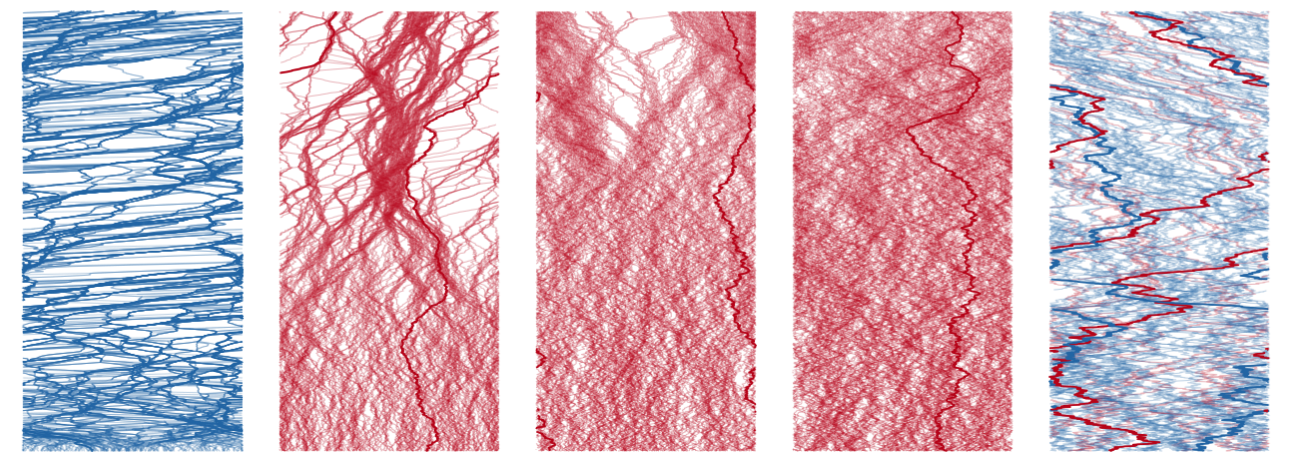Research
Emergent phenomena in intelligent robotic matter

Current artificial intelligence systems show near-human-level capabilities when deployed in isolation. Systems of a few collaborating intelligent agents are being engineered to perform tasks collectively. This raises the question of whether robotic matter, where many learning and intelligent agents interact, shows emergence of collective behaviour. And if so, which kind of phenomena would such systems exhibit? Here, we study a paradigmatic model for robotic matter: a stochastic many-particle system in which each particle is endowed with a deep neural network that predicts its transitions based on the particles’ environments. For a one-dimensional model, we show that robotic matter exhibits complex emergent phenomena, including transitions between long-lived learning regimes, the emergence of particle species, and frustration. We also find a density-dependent phase transition with signatures of criticality. Using active matter theory, we show that this phase transition is a consequence of self-organisation mediated by emergent inter-particle interactions. Our simple model captures key features of more complex forms of robotic systems.
- Contributions: Conceptualisation, numerical simulations, data analysis, writing of manuscript
- Pre-print: arxiv: 2507.22148
“Smart” microfluidic chips
From the vasculature of animals to the porous media making up batteries, the core task of flow networks is to transport solutes and perfuse all cells or media equally with resources. Yet, living flow networks have a key advantage over porous media: they are adaptive and self-organize their geometry for homogeneous perfusion throughout the network. Here, we show that also artificial flow networks can self-organize toward homogeneous perfusion by the versatile adaption of controlled erosion. Flowing a pulse of cleaving enzyme through a network patterned into an erodible hydrogel, with initial channels disparate in width, we observe a homogenization in channel resistances. Experimental observations are matched with numerical simulations of the diffusion-advection-sorption dynamics of an eroding enzyme within a network. Analyzing transport dynamics theoretically, we show that homogenization only occurs if the pulse of the eroding enzyme lasts longer than the time it takes any channel to equilibrate to the pulse concentration. The equilibration time scale derived analytically is in agreement with simulations. Lastly, we show both numerically and experimentally that erosion leads to the homogenization of complex networks containing loops. Erosion being an omnipresent reaction, our results pave the way for a very versatile self-organized increase in the performance of porous media.
- Contributions: Developed the experimental protocol
- Pre-print: arXiv: 2410.19089